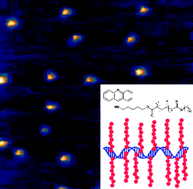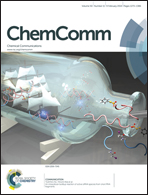Construction of DNA–polymer hybrids using intercalation interactions†
Abstract
Reversible addition–fragmentation chain transfer (RAFT) polymerisation was used to produce a range of polymers terminated with an acridine group, which intercalates efficiently into dsDNA; the structure of the polymer determines the nature and strength of the interaction. Using a short 63 base pair dsDNA, discrete and well-defined DNA–polymer hybrid nanoparticles were formed, which were characterised by dynamic light scattering, small-angle X-ray scattering and atomic force microscopy.


 Please wait while we load your content...
Please wait while we load your content...